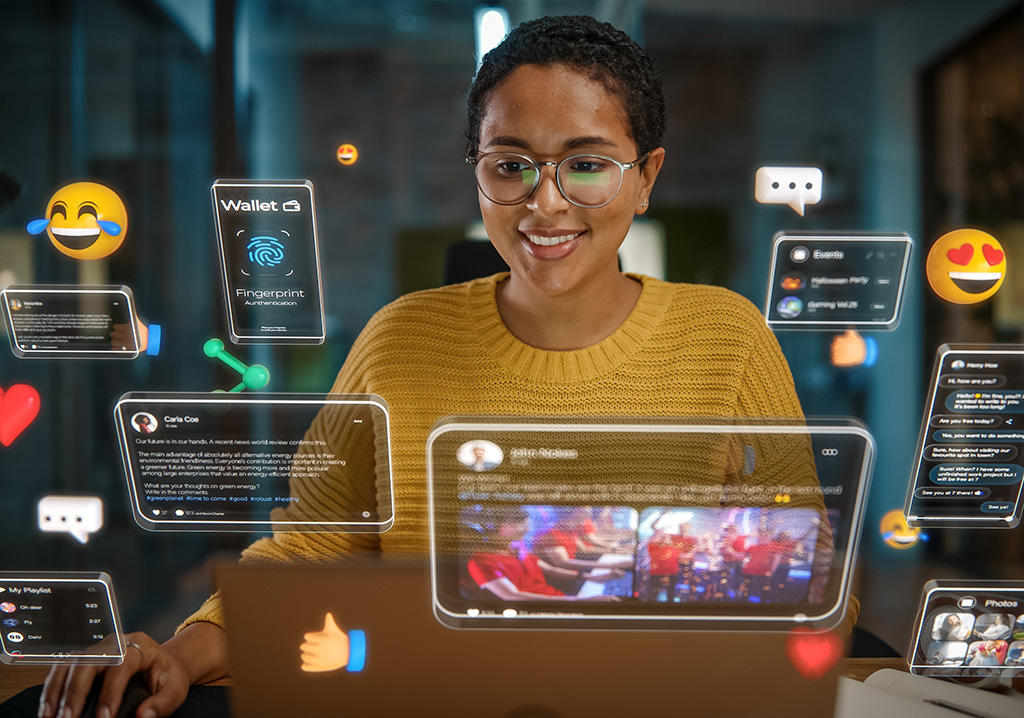Which Social Platform is Right for Me?
Properly leveraging social media is crucial for the success of your business; it allows for almost instant connection and brand establishment in ways our marketing forefathers could only dream about.
With an ever-increasing array of social media options, it can be tricky to determine which platform will best serve your business and brand voice. The tempting trap is to blindly sign up for all of them—covering all your bases, right?
Perhaps, but at what cost? If you’re putting equal amounts of effort into each account you’ve created, even if it’s a platform less in tune with your brand, that’s a waste of time and creativity. This is where knowing your audience is key, as it will allow you to pick the best social accounts for your business to connect with your customers.
Below, you’ll find a list of the most common social media options, along with their potential pros and cons:
- Ideal for: Broad audience, B2C, and community engagement.
- Audience Demographics:
- Age: Predominantly 25-34 years old, but has significant user base across all age groups.
- Gender: Fairly balanced, slightly more female users.
- Location: Global, with significant usage in North America, Europe, and Asia.
- Features: Ads, groups, events, marketplace.
- Pros: Large user base, detailed targeting options.
- Cons: Declining organic reach, competitive ad space.
- Ideal for: Visual content, lifestyle brands, and younger demographics.
- Audience Demographics:
- Age: Primarily 18-34 years old.
- Gender: Slightly more female users.
- Location: Popular in the U.S., India, Brazil, and other countries with high mobile usage.
- Features: Stories, IGTV, Shopping, Reels.
- Pros: High engagement rates, visual storytelling.
- Cons: Requires high-quality visuals, can be time-consuming.
X (formerly known as Twitter)
- Ideal for: Real-time updates, customer service, and B2B connections.
- Audience Demographics:
- Age: Majority between 18-49 years old.
- Gender: Slightly more male users.
- Location: Strong user base in the U.S., Japan, and the U.K.
- Features: Hashtags, threads, polls.
- Pros: Fast-paced, good for trending topics.
- Cons: Character limit, fast-moving content can be hard to keep up with, infested with bots that can make it hard to cut through noise and reach real people.
- Ideal for: B2B, professional networking, and industry insights.
- Audience Demographics:
- Age: Predominantly 25-49 years old.
- Gender: More male users, but a growing number of female professionals.
- Location: Widely used in North America and Europe.
- Features: Articles, job postings, company pages.
- Pros: Professional audience, great for lead generation.
- Cons: Can be less engaging, more formal tone required.
- Ideal for: Visual content, DIY, and e-commerce.
- Audience Demographics:
- Age: Primarily 18-49 years old.
- Gender: Majority female users (about 70%).
- Location: Strongest user base in the U.S., but growing globally.
- Features: Pins, boards, shopping integration.
- Pros: Strong conversion rates, evergreen content.
- Cons: Niche audience, requires regular content creation.
TikTok
- Ideal for: Short, engaging videos, younger audience.
- Audience Demographics:
- Age: Majority between 16-24 years old.
- Gender: Fairly balanced, with a slight female majority.
- Location: Highly popular in the U.S., China, and India.
- Features: Filters, effects, trending challenges.
- Pros: High engagement, viral potential.
- Cons: Requires creativity, trends change quickly, general uncertainty with cyber-security/staying power given the political climate.
YouTube
- Ideal for: Long-form videos, tutorials, and vlogs.
- Audience Demographics:
- Age: Widely used across all age groups, but especially popular among 18-49 years old.
- Gender: Fairly balanced.
- Location: Global reach, very popular in the U.S., India, and Brazil.
- Features: Channels, live streaming, ads.
- Pros: High searchability, long content lifespan.
- Cons: High production value needed, can be time-consuming.
It’s About the Content You Can Create
The above list provides a reliable overview, but it only takes you so far on your social media journey. The most important component is the content that you can sustainably create. Consistency is key for growing your audience and forging quality connections with them. You won’t achieve either with lukewarm TikToks if you dislike getting in front of the camera.
Consider getting a social media manager, especially if your followers and business prospects pick up (what a problem to have!). Whether you delegate or you’re the one writing the Tweets (what do we call them now that it’s X?) or filming the YouTube videos, it’s crucial that your message resonates with your audience. Genuine social posts made with passion and pride go a lot further than the latest viral trend. As long as you’re posting something you believe in, your customers will take note.
